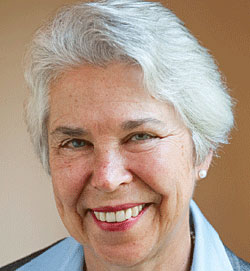Campus task force issues report on new student housing
The report calls for nine new developments to ease the campus’s student housing shortage

January 27, 2017
New residence halls on Oxford Street, a revamp of the Unit 3 housing complex and the addition of more graduate housing in Albany Village — these changes are among the recommendations put forth in a new report from UC Berkeley’s Housing Master Plan Task Force to ease the campus’s student housing shortage.
UC Berkeley Chancellor Nicholas Dirks established the task force this past summer in response to a growing concern about the lack of affordable housing near campus for upper-level undergraduates and graduate students. The university is located in a part of California infamous for its expensive real estate, and trends show that prices continue to surge: By some estimates, median monthly rent in the area is increasing by roughly 10 percent annually.

Carol Christ
“We know that the housing market in the Bay Area is really awful,” said Interim Executive Vice Chancellor and Provost Carol Christ, who chaired the task force. “Rents are expensive, housing is hard to find… and when you don’t have affordable housing close to where you’re studying, that can have a negative impact on your academic work. So this is a very high priority.”
The report — which task force members were quick to note is a draft pending feedback from students, community members and other stakeholders — identifies nine university-owned sites for potential development, some of which could be housing students by the early 2020s.
While financial modeling of individual sites will be required to determine the feasibility of each option, the report identifies the parking garage and tennis courts at Channing Way and Ellsworth Street, as well as the Oxford Street tract currently used by the College of Natural Resources for plant science research, as the two best candidates for development.
“We had already developed some plans in Residential and Student Service Programs to build on the Channing-Ellsworth site, and those were put on hold for a variety of reasons,” said task force member and Interim Vice Chancellor for Student Affairs Steve Sutton of the 200- to 400-bed residence halls envisioned for that site. “So that’s one that we could easily begin again because there were initial concepts put in place.”

Steve Sutton
The Oxford Street tract, which task force members believe will be able to support between 1,000 and 3,000 new beds for students in traditional and apartment-style residence halls, is also identified as a particularly alluring option. Christ said that the tract is “the site above all other sites that can have a transformational impact on the availability of housing on the campus.”
Additional sites suggested for development include a plot currently occupied by administrative offices at Oxford Street and Bancroft Way, the Upper Hearst parking garage, a section of the university-owned People’s Park, part of the Richmond Field Station and several others. The campus would work with those displaced by housing developments to find new locations that suit their needs, Christ said.
Local civic leaders recognized the need to expand student housing and expressed support for the task force’s vision.
“We are facing a housing crisis and the City of Berkeley commends the university in its efforts to create more affordable housing for students, faculty and staff,” said City of Berkeley Mayor Jesse Arreguin. “The housing task force’s recent work to identify sites the university could use to develop new student housing is a step in the right direction.
“We look forward to working with the university to facilitate Berkeley residents’ input into the options outlined in the report. Working together to address the shortage of affordable housing presents the city and the university with a unique opportunity to further the educational mission of the university and improve the lives of Berkeley residents.”
“Increasing [housing] density not only increases vitality, but is also beneficial for the environment – more students living next to campus means a smaller overall carbon footprint for the campus,” said Telegraph Business Improvement District Executive Director Stuart Baker. “We are supportive of the goals stated and of all the potential Southside projects listed in this report.”
Because of the campus’s current budget issues and lack of outstanding debt capacity to finance capital projects, Berkeley will use a public-private-partnership (P-3) model to finance developments such as those recommended in the report. This model, which is already being used on the campus and at other UC campuses, entails a partnership with a third-party developer who puts up capital for constructing a building, and in exchange is paid back by housing rental fees for a set period of years.
In the coming months, the Housing Master Plan Task Force will be soliciting feedback on the report and development plans from constituencies including the ASUC, Graduate Assembly, Academic Senate, UC Board of Regents, City of Berkeley and others. The task force will also conduct a broad survey of the Berkeley student body in order to determine preferences regarding housing options.